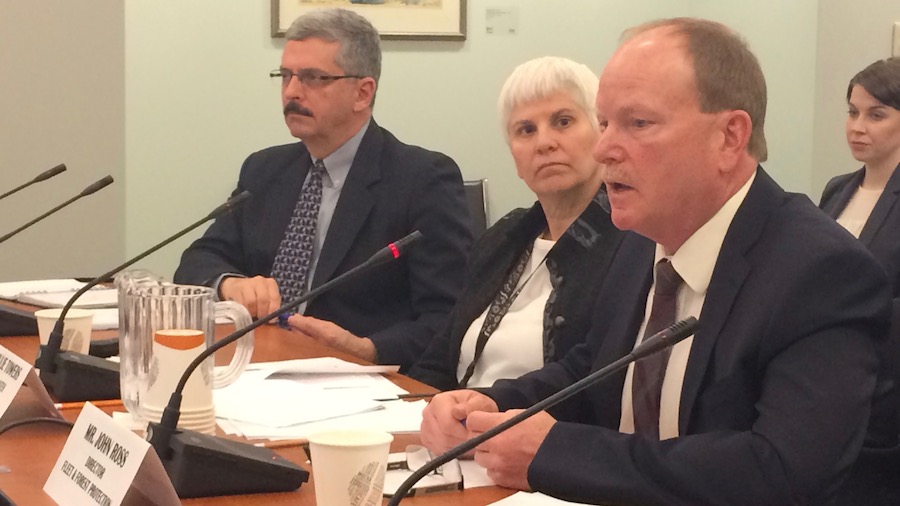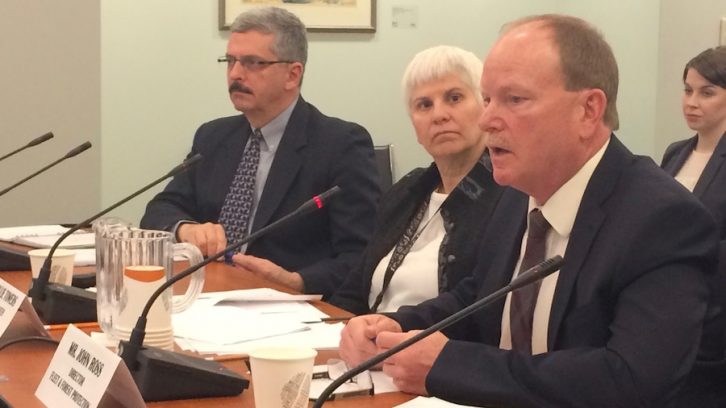Wildfire prevention
Humans are the main cause of wildfires in Nova Scotia, says report
The Department of Natural Resources discusses strategies to protect Nova Scotia's forests

caption
(Right to left) John Ross, Julie Towers and Walter Fanning at a standing committee for natural resources.
caption
(Right to left) John Ross, Julie Towers and Walter Fanning at a meeting of the standing committee for natural resources.An internal Department of Natural Resources (DNR) report indicates that the public can have a huge impact in preventing forest fires.
The progress report on the Natural Resources strategy released last year, says 99 per cent of wildfires in Nova Scotia are started by humans.
The Natural Resources strategy is a 10-year plan launched by DNR in 2011. Its goal is to improve the management of biodiversity, forests, geological resources and parks while maintaining economic and environmental balance.
This is why the deputy minister of Natural Resources, Julie Towers, calls for Nova Scotians to change their behaviour. Related stories
“We need a cultural and behavioural change, not only in the ‘burn my grass in spring’ tradition, but also arson,” said Towers.
Towers, along with John Ross, director of Fleet and Forest Protection Services, and Walter Fanning, director of Regional Service Branch, spoke to the standing committee on natural resources Thursday. They discussed Nova Scotia’s strategic plan to prevent wildfires and forest protection in relation to their report.
Wildfire prevention and protection procedures have been an increasing concern in Nova Scotia. Towers described last summer’s fire risk as “exceptional, in a negative way,” as wildfire statistics from 2016 show that 274 fires occurred in Nova Scotia, covering 755,000 hectares.
The province has undertaken a few measures to prevent wildfires. This includes enforcing fire bans in high risk areas and informing property owners of fire risks through Fire Smart, safety measures that can reduce the risk of losing your home to wildfire.
Fanning said that fire bans aren’t imposed lightly.
“We don’t want to interfere with campers or tourists who want to enjoy our province,” he said, acknowledging that fire bans are necessary to protect forests.
Fanning added that a fire occurring during a high risk period can spread 18 metres every minute. At that speed, he said, firefighting resources can’t protect nearby property.
Other measures taken by the province include raising awareness in schools and during Fire Prevention Week.
However, Fanning pointed out that Fire Prevention Week isn’t that helpful because it takes place in early October whereas most wildfires happen in May. He also noted that many wildfires are started by adults, not children.
In terms of preventing arson, Fanning said it is difficult to penalize people who start illegal fires. This is because it takes a long time to collect enough evidence to prosecute offenders.
Some members of the standing committee said they were impressed by the DNR’s forest protection strategies over the past year.
However, the department is still searching for a solution for the leading cause of wildfires in the province.
